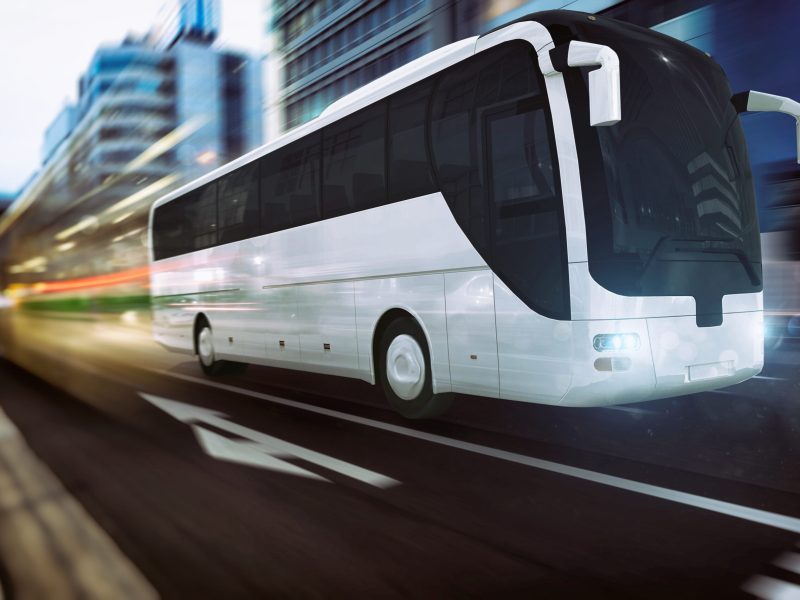Transportation Management Systems: A Global Partnership Perspective
Introduction to Transportation Management Systems
In an era where global connectivity and efficient logistics are pivotal, Transportation Management Systems (TMS) have emerged as a cornerstone in streamlining transportation operations. These systems, representing a blend of technology and strategic planning, are crucial for businesses seeking to optimize their supply chain and establish themselves as reliable transportation partners. Their role becomes even more significant when considering regions like Central America, where transportation and logistics are key to economic growth and international trade.
Transportation Management Systems are not just tools; they are comprehensive solutions that handle everything from order entry and load planning to freight auditing and payment. They provide real-time insights and analytics, helping businesses make informed decisions. In essence, a TMS acts as a catalyst for companies aiming to join the global partnership of efficient logistics and transportation.
Moreover, the digital age has revolutionized how students approach their studies, and the homework planner at https://essaypro.com/homework-planner is a testament to this evolution. Unlike traditional paper planners, this digital planner is accessible from anywhere and at any time, provided there is internet connectivity. This means students can update or check their planner on the go, be it during a bus ride home or in between classes.


Key Features of Transportation Management Systems
A Transportation Management System encompasses a range of features designed to optimize the transportation process. These include:
Route Optimization:
This feature ensures the most efficient routes are chosen, saving time and reducing fuel costs. It's particularly crucial in regions like Central America, where terrain and infrastructure can pose unique challenges. For students and researchers interested in analyzing and documenting such logistical and geographical challenges in a structured academic format, term paper writing service can provide expert assistance in crafting comprehensive and insightful term papers on these topics.
Load Planning and Execution:
TMS assists in efficiently planning the cargo load, ensuring maximum space utilization and adherence to safety regulations. TMS assists in efficiently planning the cargo load, ensuring maximum space utilization and adherence to safety regulations. With the integration of ai paper writing companies can streamline documentation processes, generating precise reports and compliance documents that accompany cargo planning.
Freight Audit and Payment Systems:
These systems automate the auditing and payment of freight bills, reducing errors and administrative overhead.
Carrier Management:
TMS aids in managing relationships with multiple carriers, ensuring compliance and performance tracking.
Advanced Reporting:
Providing intelligent insights through advanced reporting capabilities helps in making data-driven decisions.
Integration with Other Systems:
A robust TMS seamlessly integrates with other systems like Enterprise Resource Planning (ERP) and Warehouse Management Systems (WMS), creating a unified and efficient workflow.


Benefits of Implementing a Transportation Management System
Implementing a TMS can bring numerous benefits:
-
Cost Reduction:
By optimizing routes and loads, companies can significantly reduce transportation costs. -
Enhanced Customer Service:
Timely deliveries and improved order accuracy lead to higher customer satisfaction. -
Increased Visibility:
Real-time tracking and advanced reporting features offer enhanced visibility into the transportation process. -
Compliance and Security:
Ensuring compliance with transportation regulations and enhancing the security of goods in transit. -
Efficiency in Operations:
Streamlining the transportation process leads to overall operational efficiency.
These benefits are especially pertinent for businesses in Central America, where establishing a robust transportation system is key to being a competitive player in the global market.
Challenges and Considerations in Transportation Management
While the implementation of a TMS can be transformative, it comes with its set of challenges:
Integration with Existing Systems: Integrating a new TMS with existing systems can be complex and time-consuming.
Data Security and Privacy: Ensuring the security and privacy of data within the TMS is paramount.
Scalability and Flexibility: The chosen system must be scalable to adapt to the growing needs of the business.
User Training and Adoption: Effective use of TMS requires proper training and buy-in from all stakeholders.
Cost and ROI Considerations: Weighing the costs of implementation against the expected ROI is crucial for businesses, especially in cost-sensitive regions like Central America.
Case Studies: Successful Implementations
Several companies have successfully implemented TMS, leading to substantial benefits. For instance, a major retail chain in Central America integrated a TMS and saw a 20% reduction in transportation costs within the first year. Another example is a global logistics company that, after adopting a TMS, experienced improved delivery times and customer satisfaction, strengthening its position as a key transportation partner in the global market.
These case studies demonstrate how effective TMS can revolutionize transportation and logistics operations, making them integral components of intelligent advance transportation systems.





Future Trends in Transportation Management Systems
The future of TMS is intertwined with advancements in technology:
Artificial Intelligence and Machine Learning: These technologies will further enhance route optimization and predictive analytics in TMS.
Internet of Things (IoT): IoT integration will improve real-time tracking and condition monitoring of shipments.
Sustainability Initiatives: TMS will play a crucial role in promoting eco-friendly transportation practices.
Expansion in Emerging Markets: Regions like Central America will see increased adoption of TMS as they join the global partnership in advancing transportation systems.
Increased Collaboration: Future TMS will likely foster more collaboration between various transportation stakeholders.
In conclusion, Transportation Management Systems are not just technology platforms; they are gateways to efficient, cost-effective, and sustainable transportation solutions. As they evolve, TMS will continue to be pivotal in shaping the future of global logistics and transportation networks.
FAQs
How did new urban transportation systems contribute to socioeconomic segregation in the late 1800s?
In the late 19th century, the development of new urban transportation systems, such as streetcars, subways, and elevated trains, significantly impacted the socio-economic landscape of cities. These systems contributed to socioeconomic segregation in several ways:
Expansion of Urban Areas: The new transportation systems allowed cities to expand geographically. Wealthier residents began moving to suburbs and areas farther from the crowded city centers, as they could afford the fares and the commute. This movement led to a physical and socio-economic separation between the affluent and the working classes.
Accessibility and Affordability: Transportation at that time was not universally accessible or affordable. The working class, often residing in city centers due to the proximity to industrial jobs and lower housing costs, sometimes found the fares for these new modes of transport prohibitively expensive. This limited their ability to move to better neighborhoods and perpetuated the cycle of poverty.
Creation of Exclusive Neighborhoods: The transportation lines often led to the development of new, exclusive residential areas that catered to the upper and middle classes. These neighborhoods were designed with amenities and services that were not available in working-class districts, leading to a form of socio-economic segregation.
Impact on Real Estate and Services: Property values tended to increase near transportation lines, making these areas less affordable for lower-income residents. Additionally, services like shops, schools, and leisure facilities often focused on the more affluent areas, further segregating the urban population.
In essence, while urban transportation systems revolutionized city life and offered improved mobility, they also inadvertently contributed to the physical and socioeconomic segregation of urban populations by income levels.
A positive effect of urbanization was the building of which public transportation systems?
Urbanization in the late 1800s and early 1900s led to several positive developments in public transportation systems, which were critical in shaping modern cities. Some of the key public transportation systems built as a result of urbanization include:
Streetcars and Trams: These were among the first mass transit systems in urban areas, providing affordable and efficient transportation for city dwellers. Streetcars enabled people to commute longer distances within the city, connecting different neighborhoods and facilitating urban expansion.
Subway Systems: The introduction of underground rail systems, like the London Underground and the New York City Subway, revolutionized urban transport. Subways allowed for faster movement of large numbers of people without the constraints of surface traffic, greatly enhancing the connectivity within cities.
Elevated Railways: In cities like Chicago and New York, elevated trains provided an alternative to street-level transportation, reducing congestion and facilitating quicker, more efficient intra-city travel.
Buses: The development of bus networks further democratized urban transportation. Buses could reach areas not serviced by rail or tram lines, providing more comprehensive coverage and flexibility in routing.
These transportation systems collectively improved mobility within growing urban centers, facilitated the expansion of cities, and played a crucial role in shaping the social and economic fabric of urban life. They enabled a more diverse workforce to commute to different parts of the city, supported the growth of businesses and industries, and contributed to the overall dynamism and vibrancy of city life.